1. Study background and objectives
2. Study scope and methodology
Ⅱ. Literature review
1. Environmentally friendly construction
1.1. Conceptions and Traits of Eco-friendly Construction
1.2. Current State
2. LEED certification
2.1. Concept of LEED
2.2. Types of LEED certification.
2.3. LEED grade classification
2.4 Detailed evaluation item of LEED
Ⅲ. Design of study
1. Research models and hypothesis setting
2. Data collection and analysis methods
Ⅳ. Data analysis
1. General characteristics of selected buildings
2. Comparing occupants’ satisfaction of LEED certified building and non-certified building
3. Analysis of correlation with occupants’ satisfaction and certification score
4. Analysis of satisfaction with LEED certified buildings and non-certified building
Ⅳ. Conclusion
References
1. Study background and objectives
Recently, due to environmental pollution and climate change, attention to environment is more growing than ever. Especially, buildings form 40% of energy and resource consumption, 30-40% of carbon dioxide emission, 20-25% of waste discharge, 17% of water consumption, and 25% of wood consumption, so buildings are mainly responsible for energy consumption. In this situation, buildings in cities had been given environmental responsibility that can suggest 'new architectural alternative' in aspect of decreasing resource consumption and waste discharge. And in this process, the concept of green building appeared. One of these alternatives, green building certification was actively developed and carried out in each countries.
The United States established US Green Building Council (USGBC) in 1993 for pursuing the sustainability of buildings and construction industry, designed buildings and communities that can give environment improving quality of life and presented LEED (Leadership in Energy and Environmental Design) certification program considering environment and social in 2000. Besides, BREEAM in the United Kingdom, CASBEE in Japan etc. are made and practiced considering own countries. Accordingly, Korea have developed and practiced GBCC (Green Building Certification Criteria) from 2002, and 3330 buildings in Korea were acquired GBCC certification until Oct 2013. Also from 2009 to Oct 2013. 39 buildings in Korea were acquired LEED certification.
But, there are many problems of certification with the rate of attention and demand. First, certification can’t involve the process of use, because it is only given by the initial building design. So they have problem that can’t control environmental quality level change by utilizing of occupants. Also, they concentrate to physical factors for securement of environmental-friendly materials and skills and overlook the aspect of users in criteria. Like this, Green Building Certification have overlooked the users and process of using.
From these problems, this study will conduct investigation of occupants' satisfaction for studying focusing on users and indoor environment that greatly effect to users. Through this study, first, we will compare and analyze between LEED indoor environmental score of buildings and occupants' satisfaction, and research about the correlation between criteria and satisfaction. Second, we will compare and analyze between satisfaction of LEED buildings and non LEED building’s, and research effectiveness of LEED certification. As a result, we will suggest development to indoor environment of green office buildings for more human.
나민희, 2014, 「LEED인증 건축물 분석을 통한 실내공간 친환경 평가항목의 발전방향에 관한 연구 -국내 업무용 건축물 중심으로-」, 석사학위논문, 한성대학교 대학원, 서울
백홍철, 2010, 「국내 건축물의 LEED 인증을 위한 CM의 역할에 관한 연구」, 석사학위논문, 고려대학교 공과대학원, 서울
서혜수, 2004, 「사례분석을 통한 친환경건축물인증제도의 실내환경 인자 분석」, 석사학위 청구논문, 연세대학교, 서울
우강(于江), 2014, 「중국 녹색건축 인증제도 개선방안의 연구 -G-SEED(한) 및 LEED(미) 중심으로-」, 석사학위청구논문, 광운대학교 대학원, 서울
이원기, 2013, 「신축건축물 LEED 인증을 위한 추가 공사비 연구 -국내 LEED 인증 실 사례 중심으로-」, 석사학위논문, 서울과학기술대학교 주택대학원, 서울
한국 LEED 연구소, 『LEED, 미래의 건축』, 새로운 사람들, 2009
정지나 외 2명, 「국내 친환경 건축물 사례 분석」, 『그린빌딩(한국그린빌딩협의회지) 』, v.9 n.1
Jason Bae, 「친환경 인증제의 허점」, NEWS PAPERMINT, 2013년 8월 2일
미국 그린빌딩협의회. www.usgbc.org/

- 오늘 본 자료가 없습니다.
- 청소년복지론] 인터넷과 스마트폰 사용이 청소년의 삶에 미치는 이점과 문제점을 생각해보세요
- 청소년복지론] 인터넷과 스마트폰 사용이 청소년의 삶에 미치는 이점과 문제점을 생각해보세요
- 사회복지조사론토론- A 노인 요양원에서 생활하는 노인 클라이언트들의 욕구를 파악하기 위하여 조사를 진행하고 있다 면접조사가 바람직할지 또는 설문조사 바람직할지 토론하시오
- 아동발달과 연계한 아동미술의 필요성을 설명하고, 아동발달 지원을 위해 예비보육교사로서 갖추어야 할 아동미술 지도 역량을 기술하시오
- 사회복지정책의 순기능과 역기능을 각각 설명하고, 현재 시행중인 사회복지(정책)제도를 선택하여 예상되는 순기능과 역기능을 설명해주세요
해당 정보 및 게시물의 저작권과 기타 법적 책임은 자료 등록자에게 있습니다. 위 정보 및 게시물 내용의 불법적 이용,무단 전재·배포는 금지되어 있습니다. 저작권침해, 명예훼손 등 분쟁요소 발견 시 고객센터에 신고해 주시기 바랍니다.





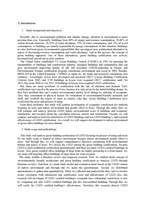
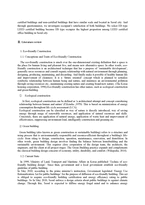
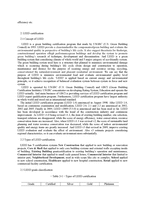



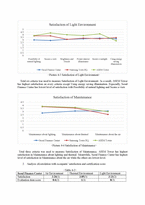
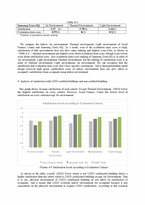
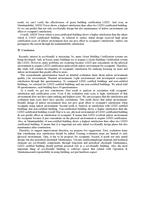

 분야
분야

